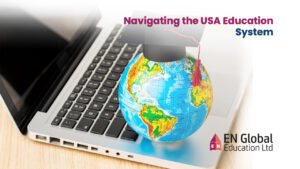Australia is a popular destination for international students seeking high-quality education and cultural
experiences. Navigating the Australian education system can be a rewarding but complex journey. Here
are some key points which international students can keep in mind:
Understanding the Education Levels:
Australia’s education system is divided into primary, secondary, and tertiary levels. Primary education
includes grades 1 to 6, secondary education spans grades 7 to 12, and tertiary education covers
universities and vocational institutions.
Choosing the Right Course and Institution:
Australia offers a diverse range of courses and institutions. Research thoroughly to identify programs
that align with your career goals. Consider factors like reputation, course content, and location when
selecting an institution.
English Language Proficiency:
International students are required to demonstrate English language proficiency through tests like IELTS
or TOEFL. Check the specific requirements of your chosen institution and program, and plan accordingly.
Student Visas and Eligibility:
Obtain a student visa before arriving in Australia. Familiarize yourself with the visa application process
and eligibility criteria. Ensure that your chosen course meets the visa requirements and provides you
with the necessary documentation.
Health Insurance:
Health insurance is mandatory for international students in Australia. Make sure to arrange Overseas
Student Health Cover (OSHC) to cover medical expenses during your stay.
Part-Time Work Opportunities:
International students are allowed to work part-time while studying. Familiarize yourself with the work
restrictions and seek employment opportunities that complement your studies without compromising
your academic performance.
Cultural Awareness:
Australia is known for its cultural diversity. Embrace this multicultural environment by participating in
cultural events, clubs, and activities. Building connections with local and international students can
enrich your overall experience.
Academic Support Services:
Take advantage of the academic support services offered by institutions, such as tutoring, writing
centers, and counseling services. These resources can assist you in adapting to the Australian education
system and overcoming any challenges you may face.
Understanding the Grading System:
The Australian grading system is different from many other countries. Familiarize yourself with the
grading scale used in your institution to interpret your academic performance accurately.
Post-Graduation Opportunities:
Explore post-graduation options in Australia, such as skilled migration or further studies. Attend career
fairs, connect with industry professionals, and utilize career services to enhance your chances of
securing employment in Australia after completing your studies.
In conclusion, navigating the Australian education system as an international student requires careful
planning and adaptation. By understanding the key aspects mentioned above, you can make the most of
your educational journey in Australia, ensuring a successful and enriching experience.



